Fig Cookies with Vanilla Glaze
I like to make a New Year's cookie based on researching traditions. There are many food traditions for celebrating the new year, everything from savory to sweets. This year, I am going to other countries for inspiration.
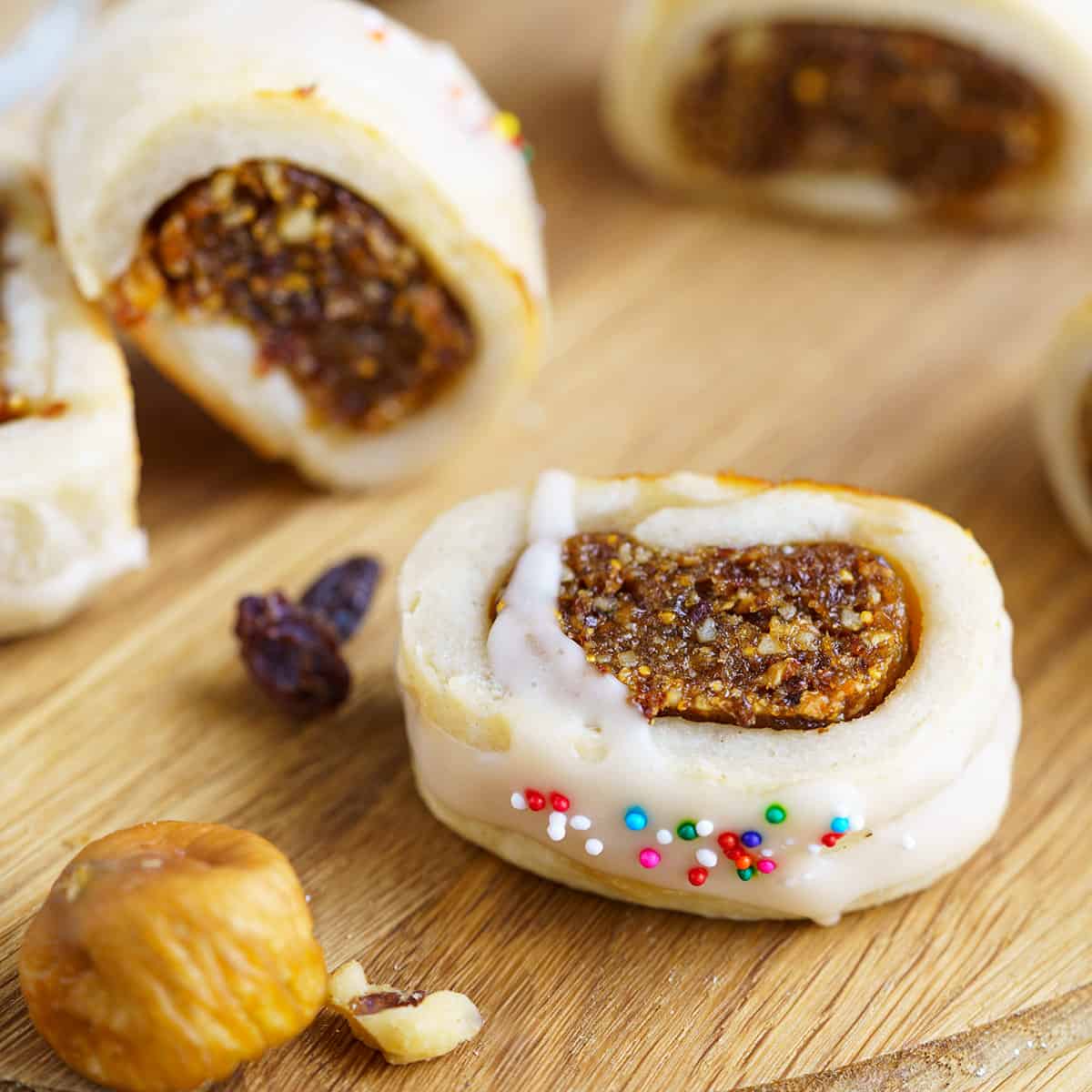
Jump to:
- Fig Cookies with Vanilla Glaze
- Traditions
- Ingredients for Fig Cookies
- Outside Cookie
- Fig Filling
- Vanilla Glaze
- Making Fig Cookies
- Mixing the Outside Cookie Dough
- Creating the Fig Filling
- Rolling out the Cookie Dough
- How to Seal the Fig Filled Cookie Log
- Slicing and Baking
- Adding the Vanilla Glaze
- FAQ's
- Other Fig or Orange Cookies
- Recipe
Traditions
The Spaniards eat a grape at each stroke of the midnight clock; one represents each month on the calendar. It is said that if a grape is bitter, watch out for that month. It may have some pitfalls. I added raisins to my cookie to represent the grape.
Many cultures believe that eating a round fruit will give prosperity and good luck in the coming year. With this in mind, I added orange zest and juice, I wasn't taking any chances, so I added both.
Throughout history, the fig has been associated with abundance, fertility, and sweetness, so it is often added to food for luck.
Ingredients for Fig Cookies
Outside Cookie
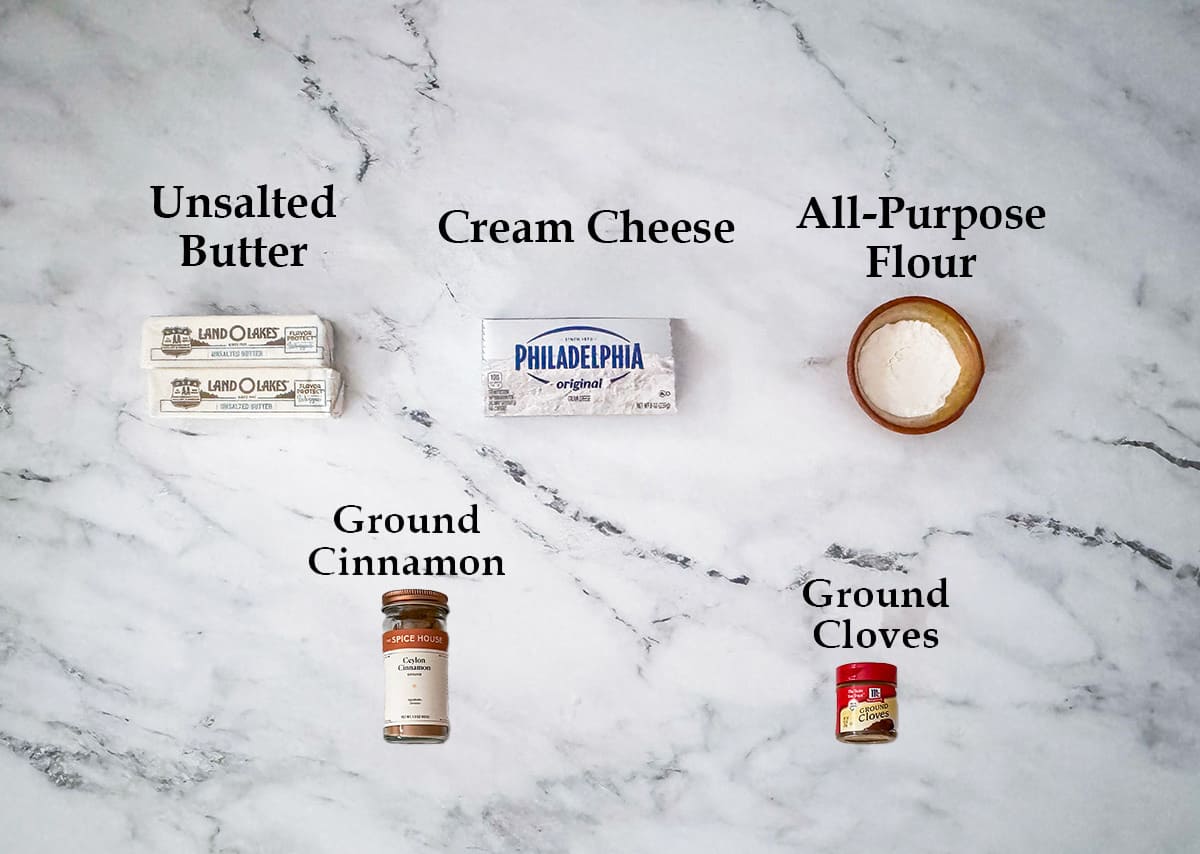
- Butter unsalted
- Cream Cheese
- All-purpose flour
- Ground cinnamon
- Ground cloves
Fig Filling
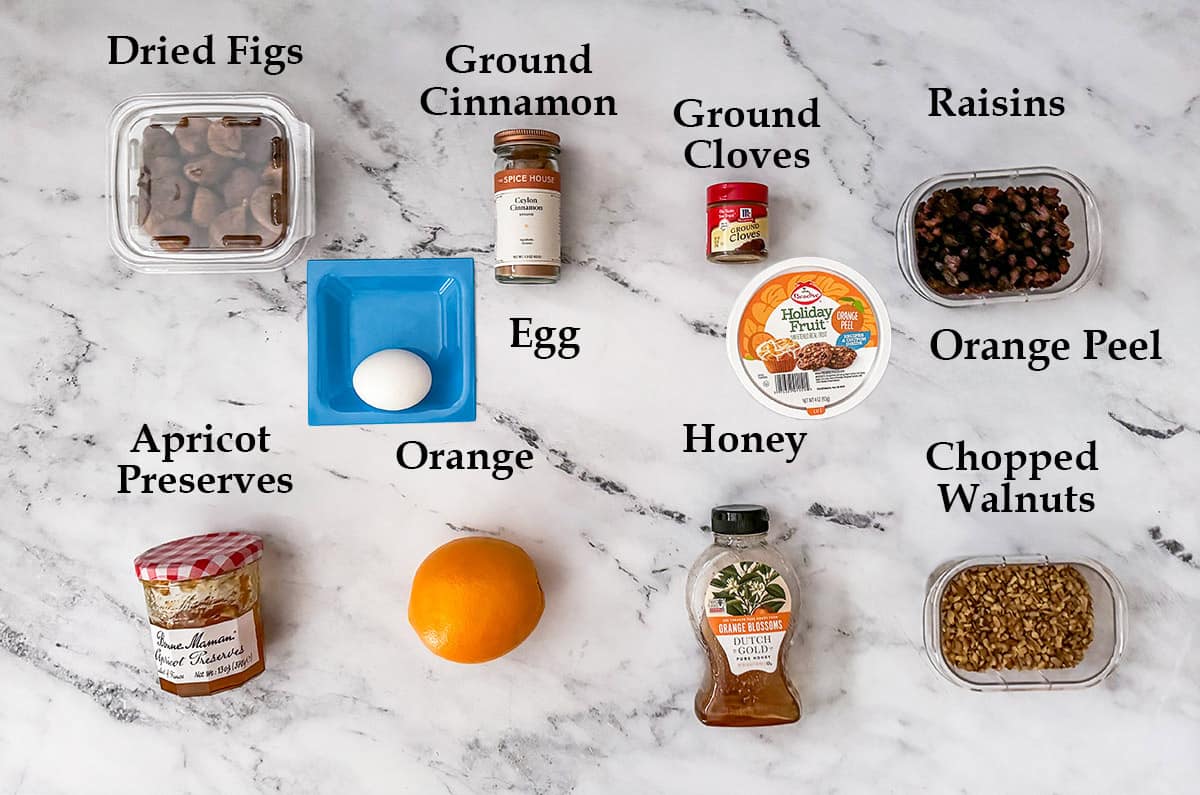
- Dried figs
- Chopped walnuts
- Raisins
- Ground cloves
- Ground cinnamon
- Orange juice
- Orange zest
- Honey
- Apricot preserves
- Egg white
- Orange peel
Vanilla Glaze
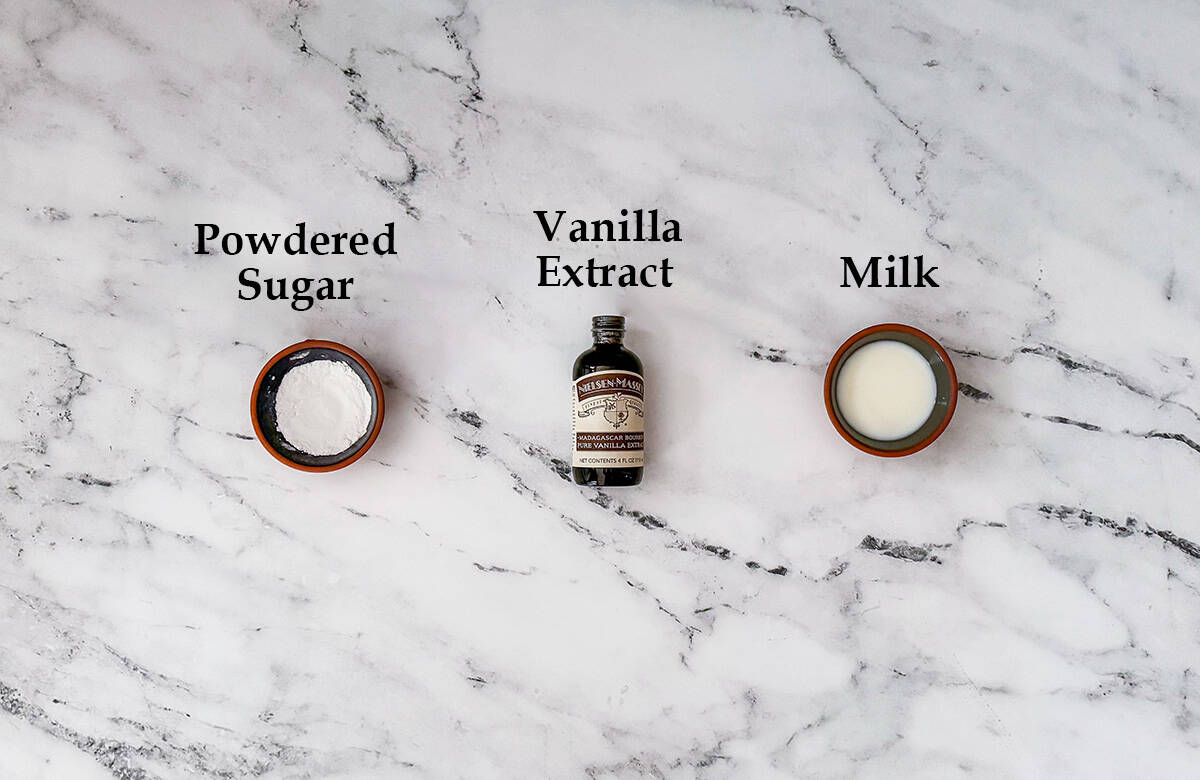
- Powdered sugar
- Vanilla Extract
- Milk
- Nonpareils sprinkles (optional)
Making Fig Cookies
During this time of the year, I am running around and trying to squeeze in everything I want to get done. These cookies can be baked in one day, but I usually make part one day and finish in the next day or two.
Mixing the Outside Cookie Dough
So starting with the outside part of the cookie, I weigh the flour and add the cinnamon and cloves. To blend I run a whisk through the flour mixture.
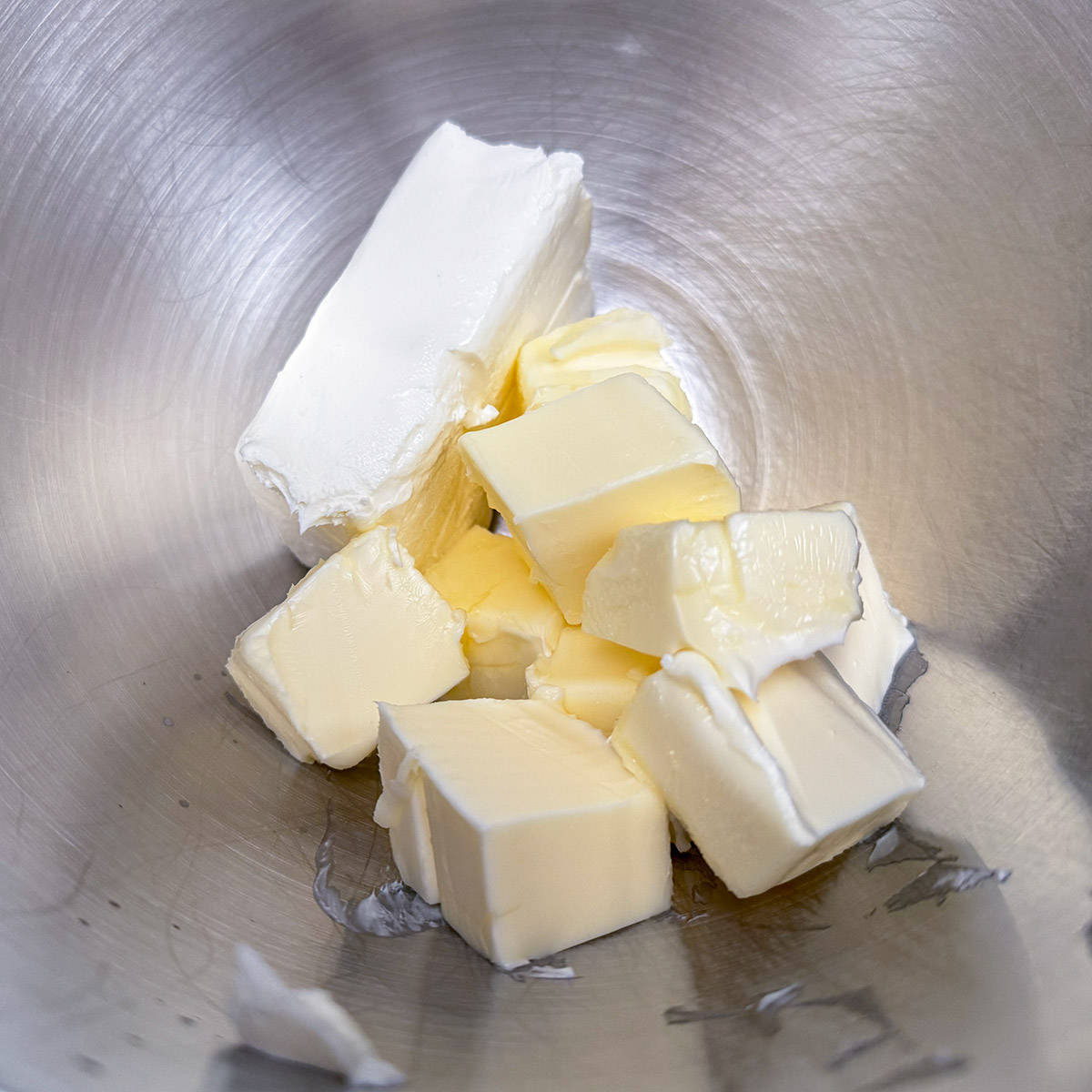
I like to cut up my butter; it helps the blending process. Also, add the cream cheese.
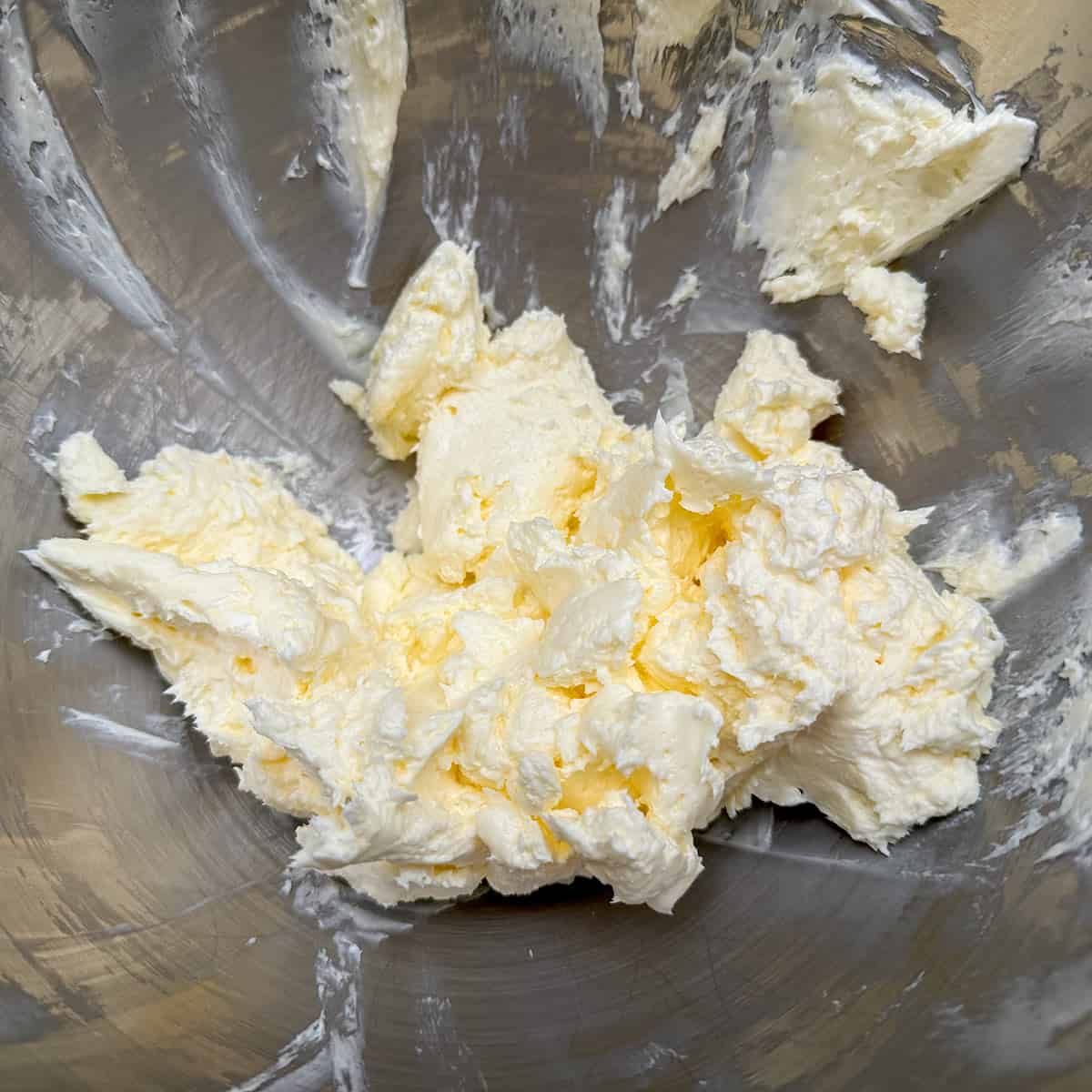
Mix on a medium mixer speed to blend the butter and cream cheese for about 2 minutes. Next, add the flour mixture. I only mix for a minute. You will have dry patches and some flour that is not completely mixed, but you will fix that in the next step.
Not overmixing the flour will help to create a flaky outside cookie.
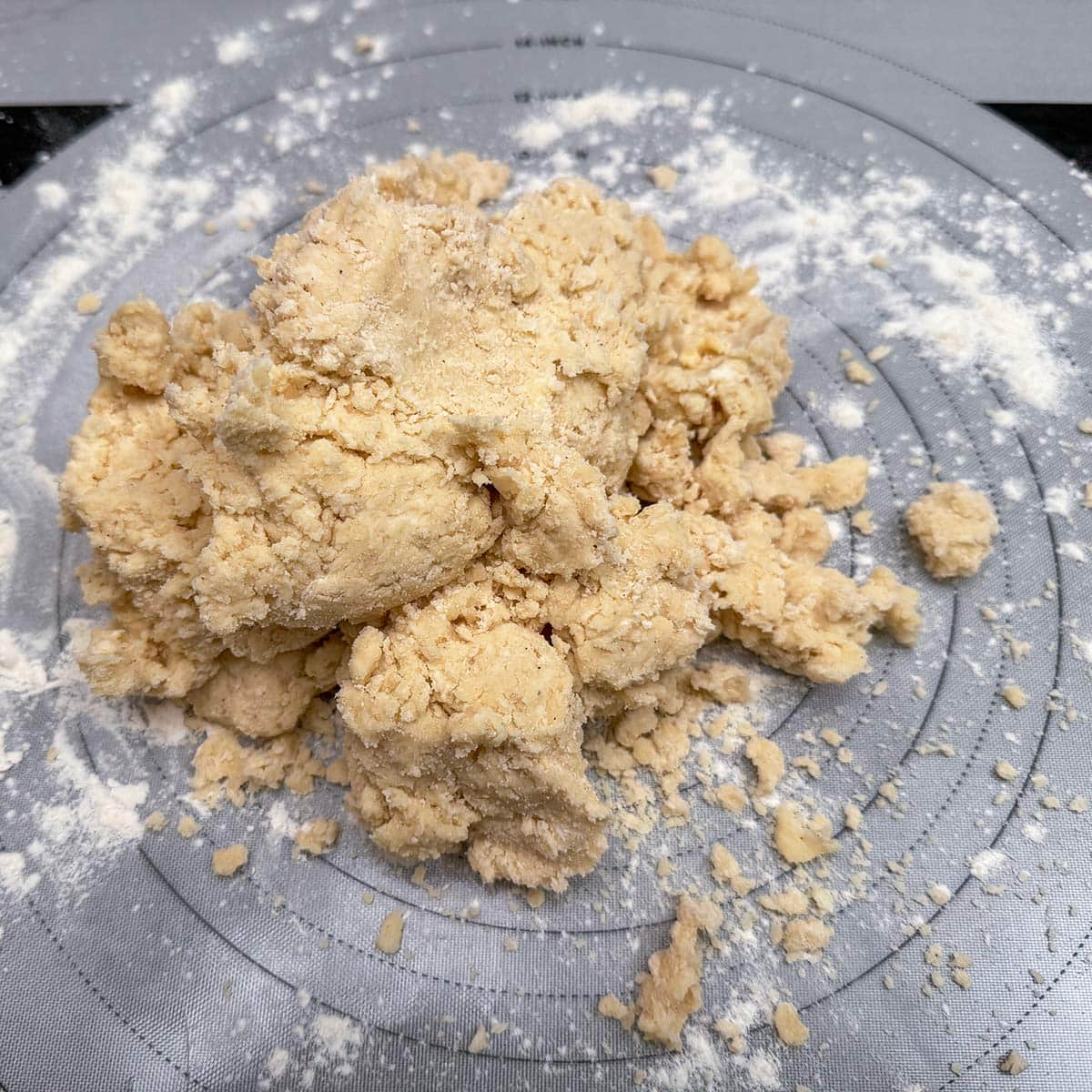
Put all the dough onto a pastry mat that has been sprinkled with powdered sugar. Knead the dough until the butter and cream cheese have absorbed the flour.
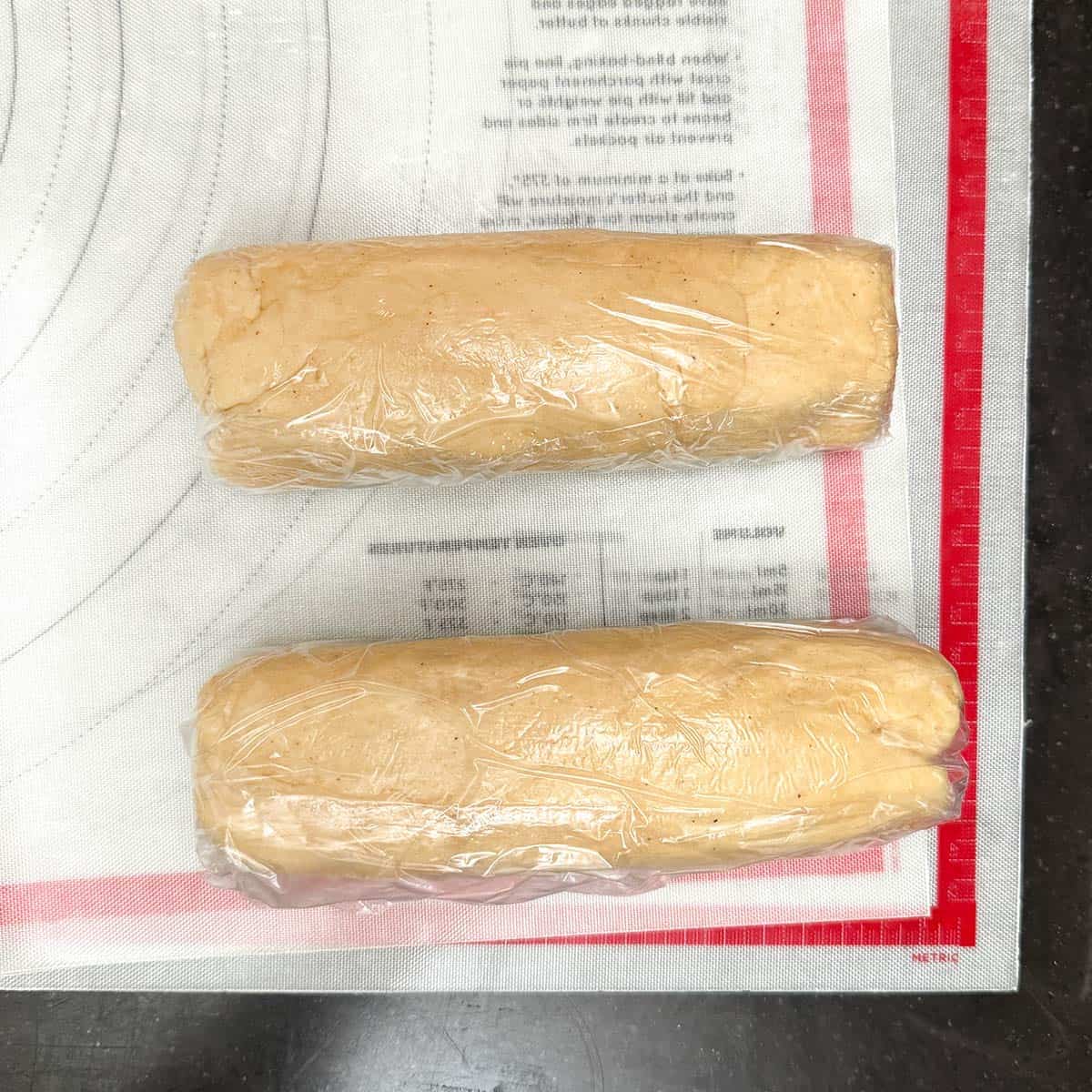
Divide the dough in half (I used my scale) and make 2 log shapes about 7" long. This will make it easier to roll out the rectangular shape. Wrap them in plastic wrap.
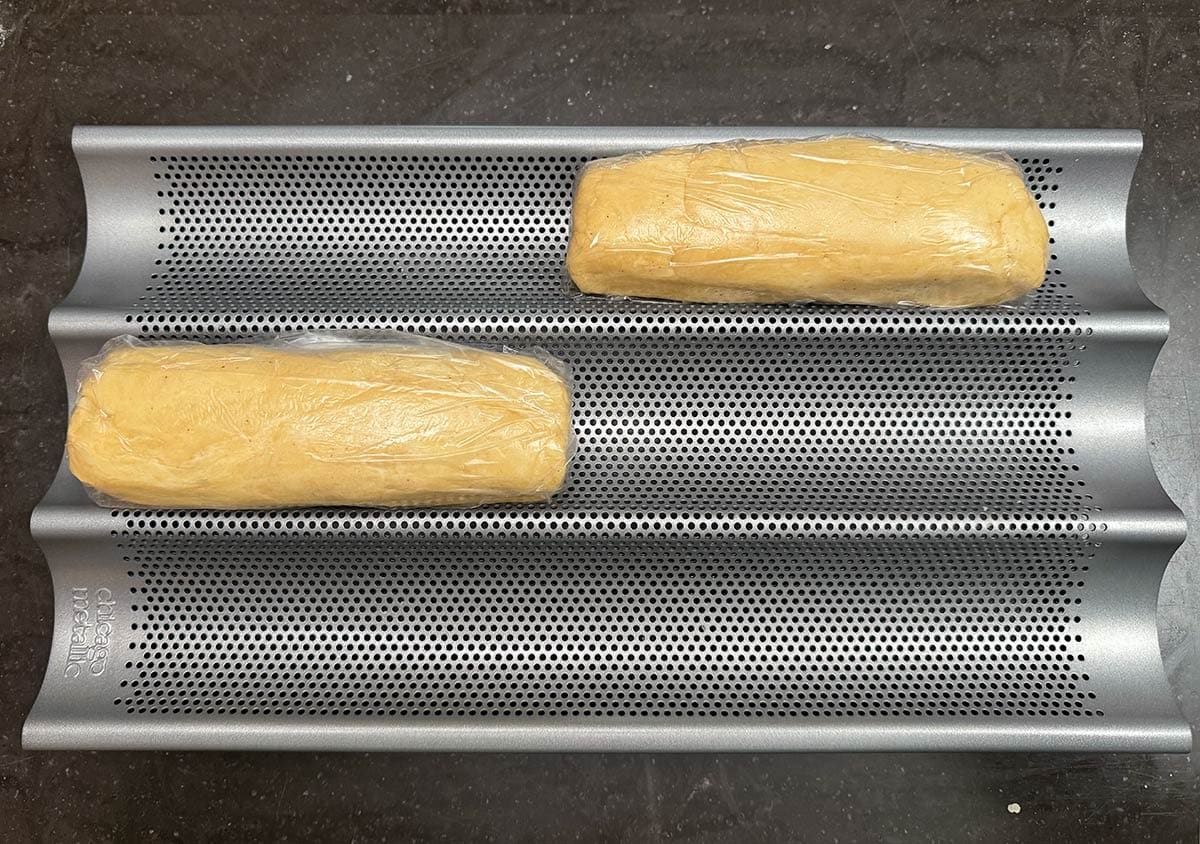
I use a baguette pan to help keep them round. Place them in the refrigerator for 2 hours. I got busy, and they stayed in the fridge overnight, perfectly OK.
Creating the Fig Filling
This is an easy step! I love it when I can throw everything into a food processor and mix it. A few prep items need to be taken care of first. You want to cut the stems off of each fig.
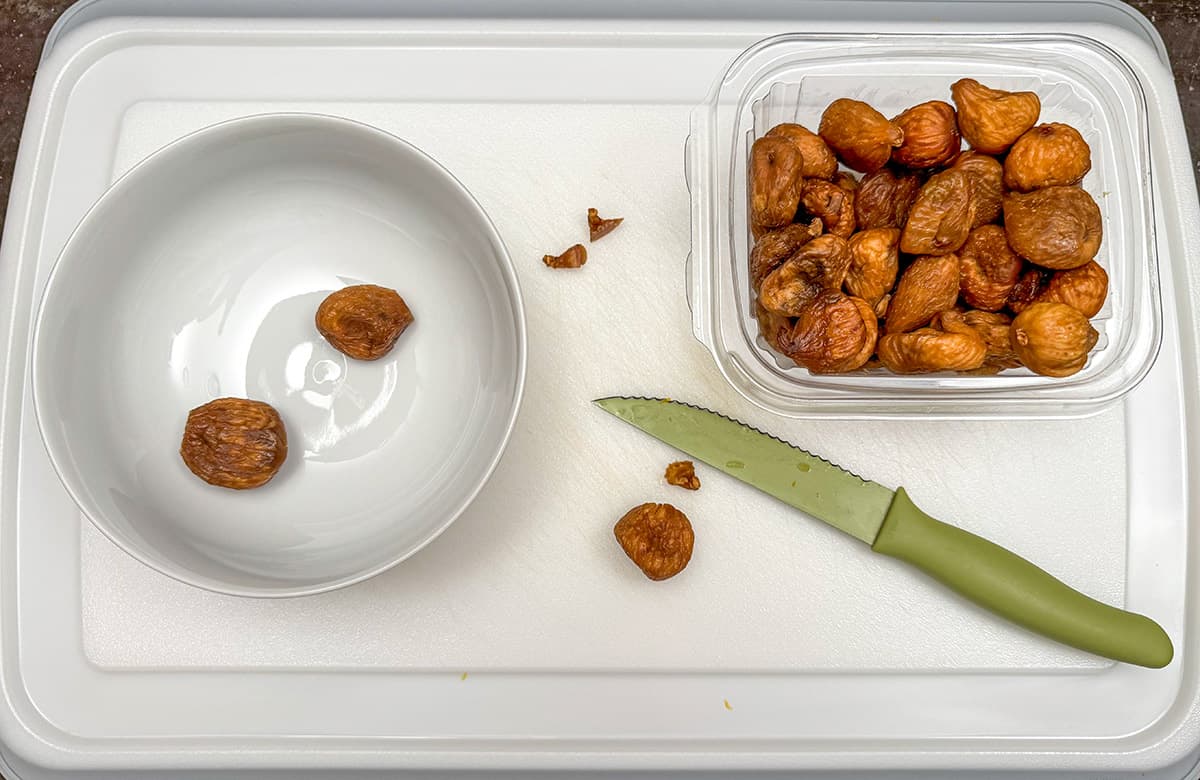
Next zest and juice the orange.
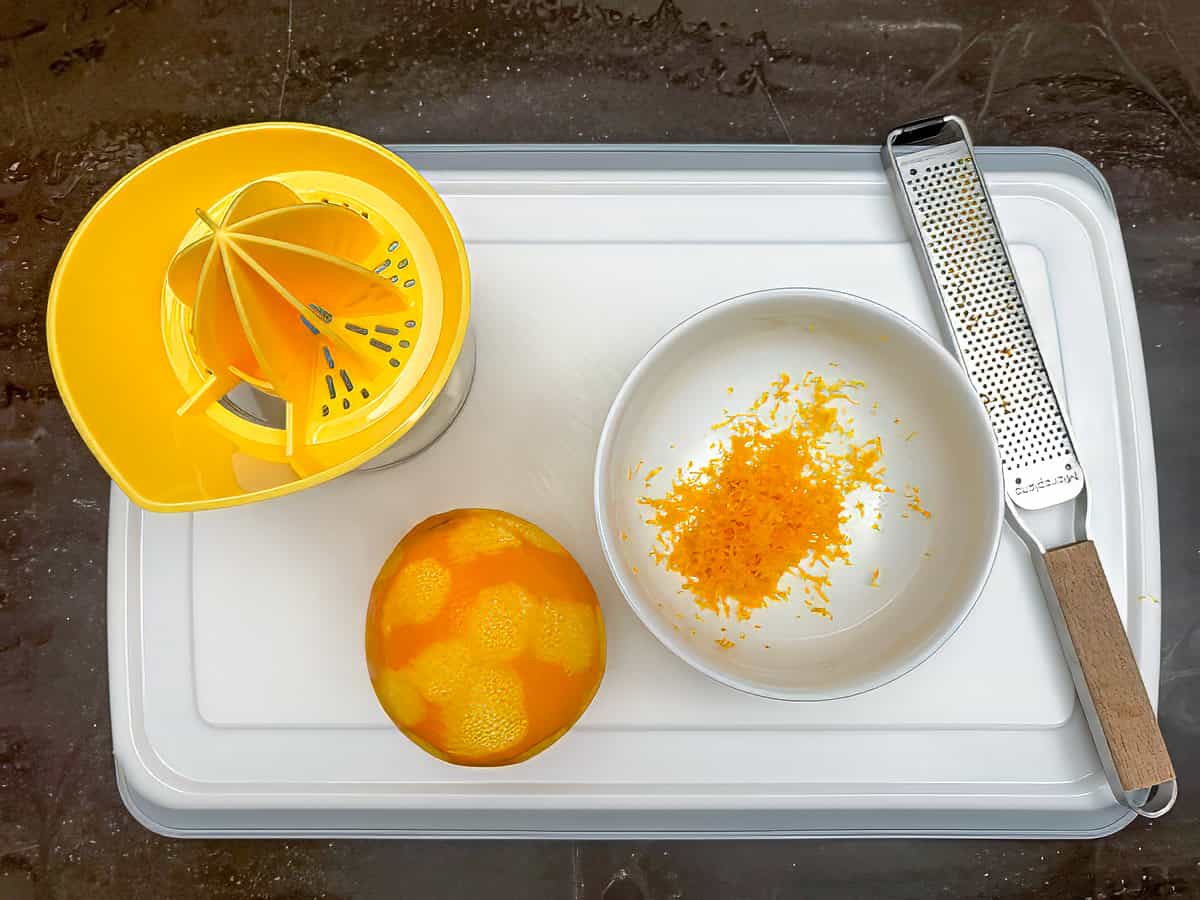
Throw the figs, walnuts, raisins, cloves, cinnamon, orange juice, orange zest, apricot preserves, and honey, and pulse until they come together. It should drift to one side of the food processor's bowl since it will be tacky.
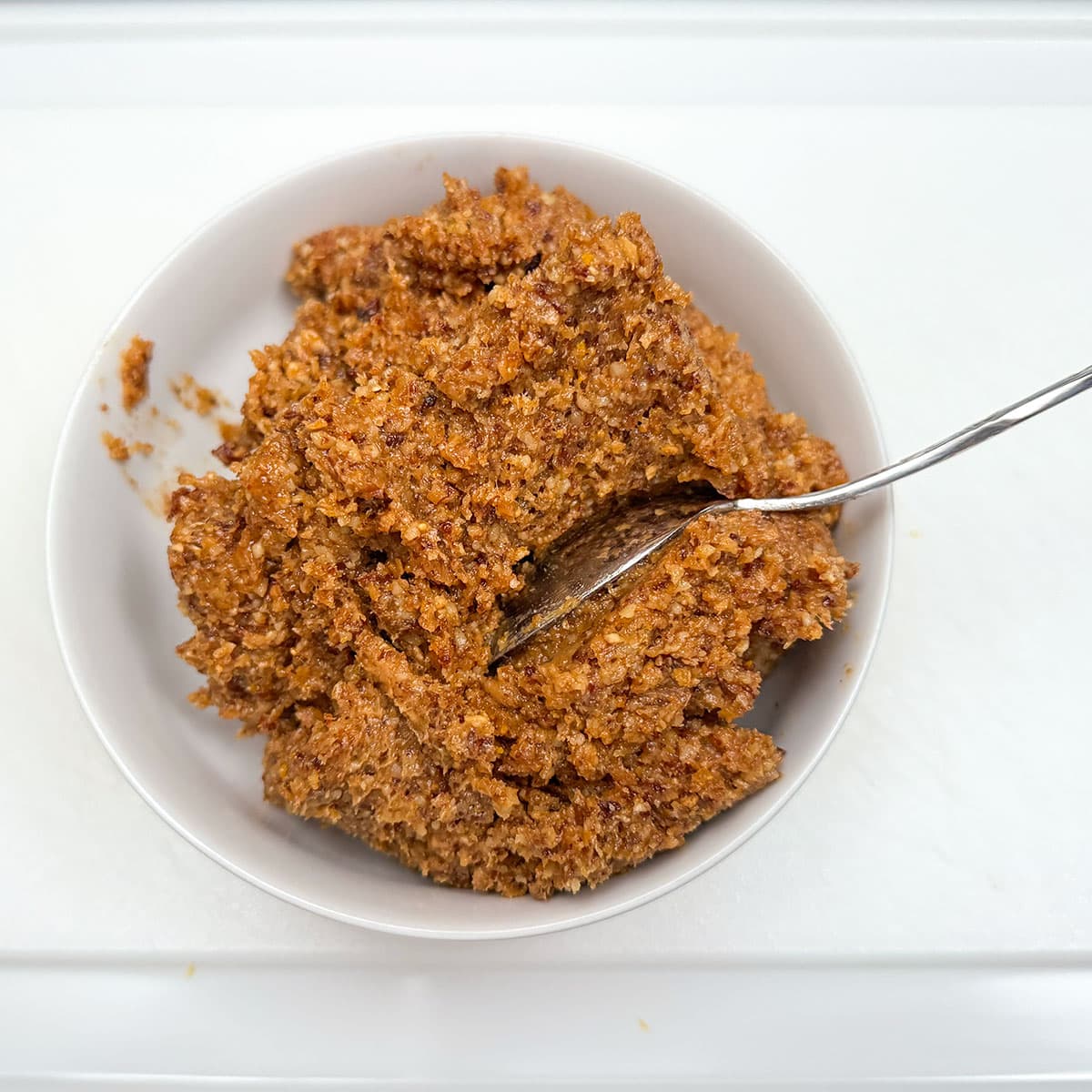
The fig mixture will stick together when forming the filling part because of the honey and the preserves.
Rolling out the Cookie Dough
I take the dough out of the fridge a little while before I am going to start rolling the dough. Sprinkle powdered sugar on the mat before adding the first log If you start rolling and see cracks on the sides just stop and let it warm up a little more. This just means the dough is still to cold to roll.
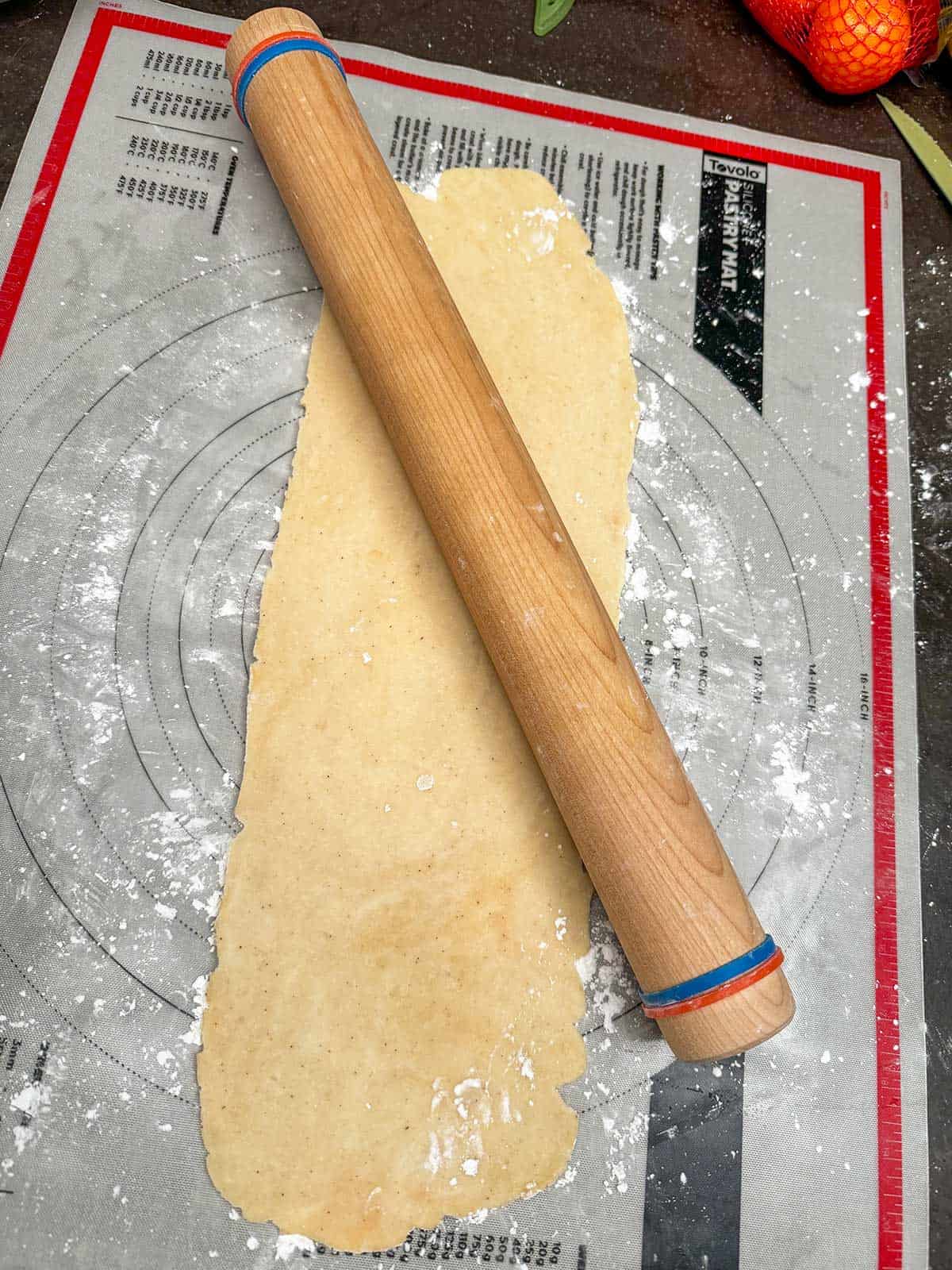
I find it easier to roll on an angle to get my rectangular shape. When rolling out the dough, you want it to be about ⅛" to 3/16" thick. I use bands on the sides of my pin to get an even thickness of dough.
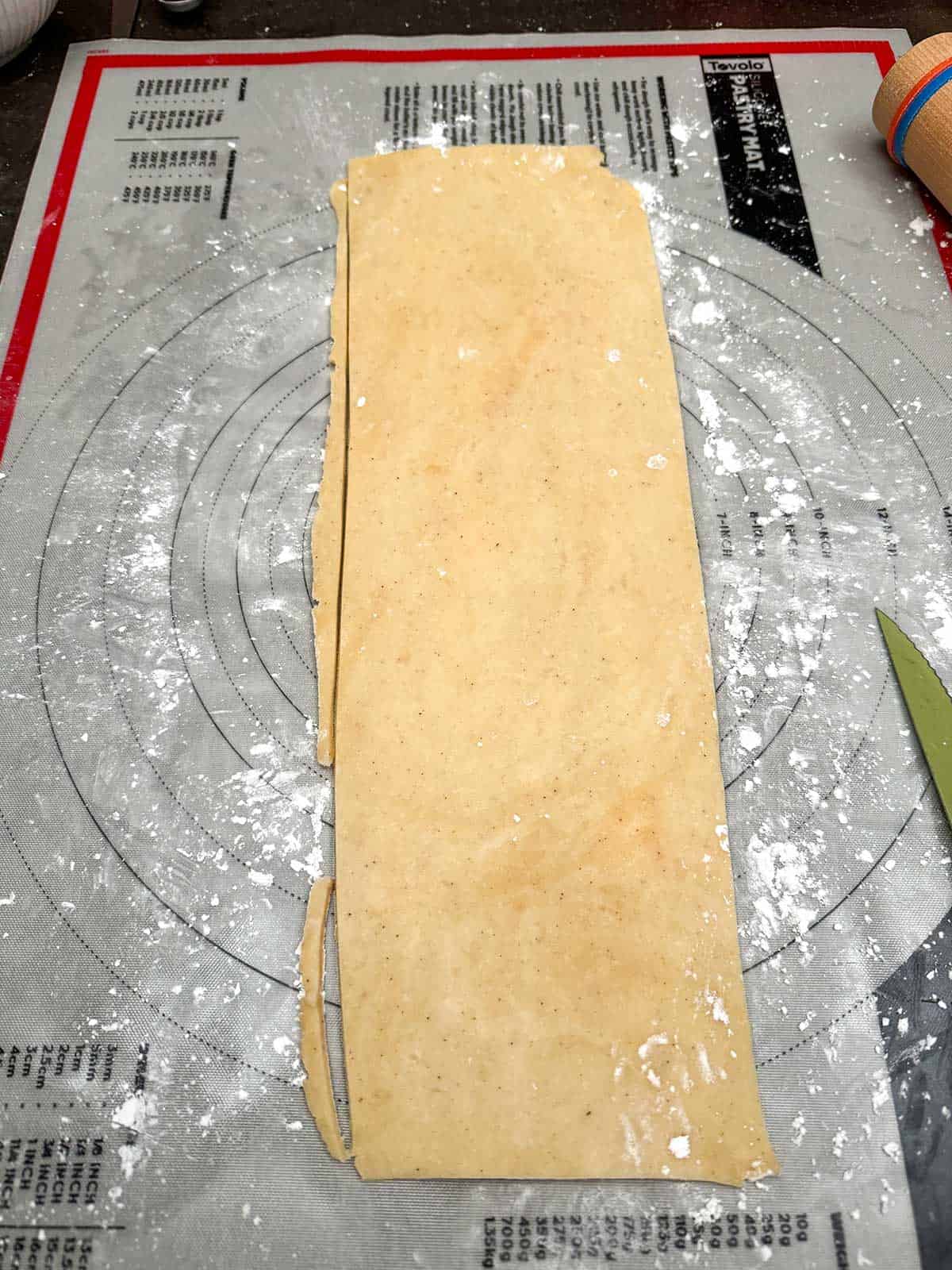
Before I trim the sides, I lift the top part, sprinkle with more powdered sugar under the dough, and then do the same for the other half. You want a rectangle shape that is 7" by 16" after you trim the sides. It doesn't have to be perfect, but you do want to try to get straight edges.
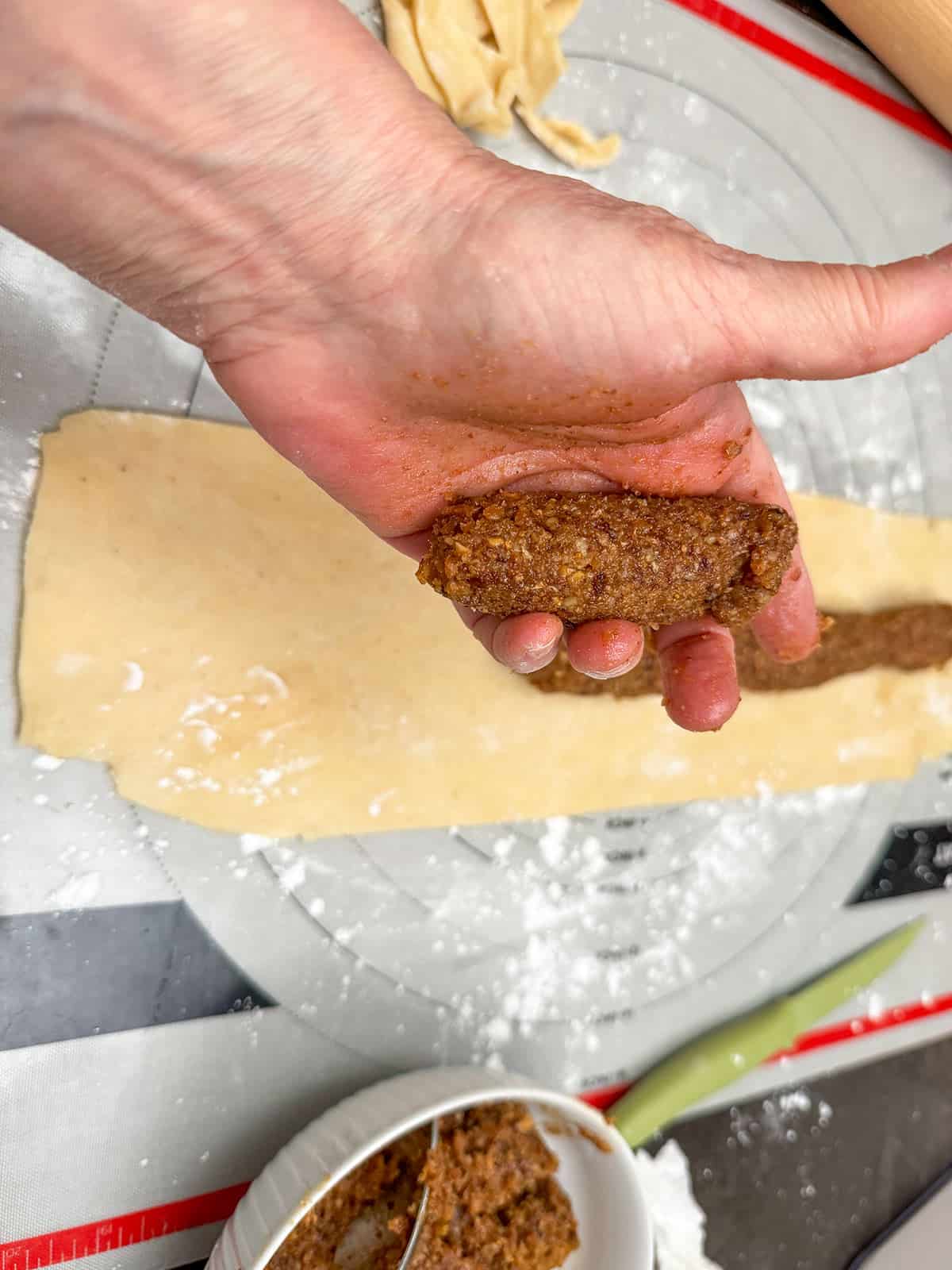
Now spoon some of the fig filling into your hand and make a log shape. I did about 1 ½" wide; the length is as big as your palm. Line them down the middle and fill in any gaps between the fig logs.
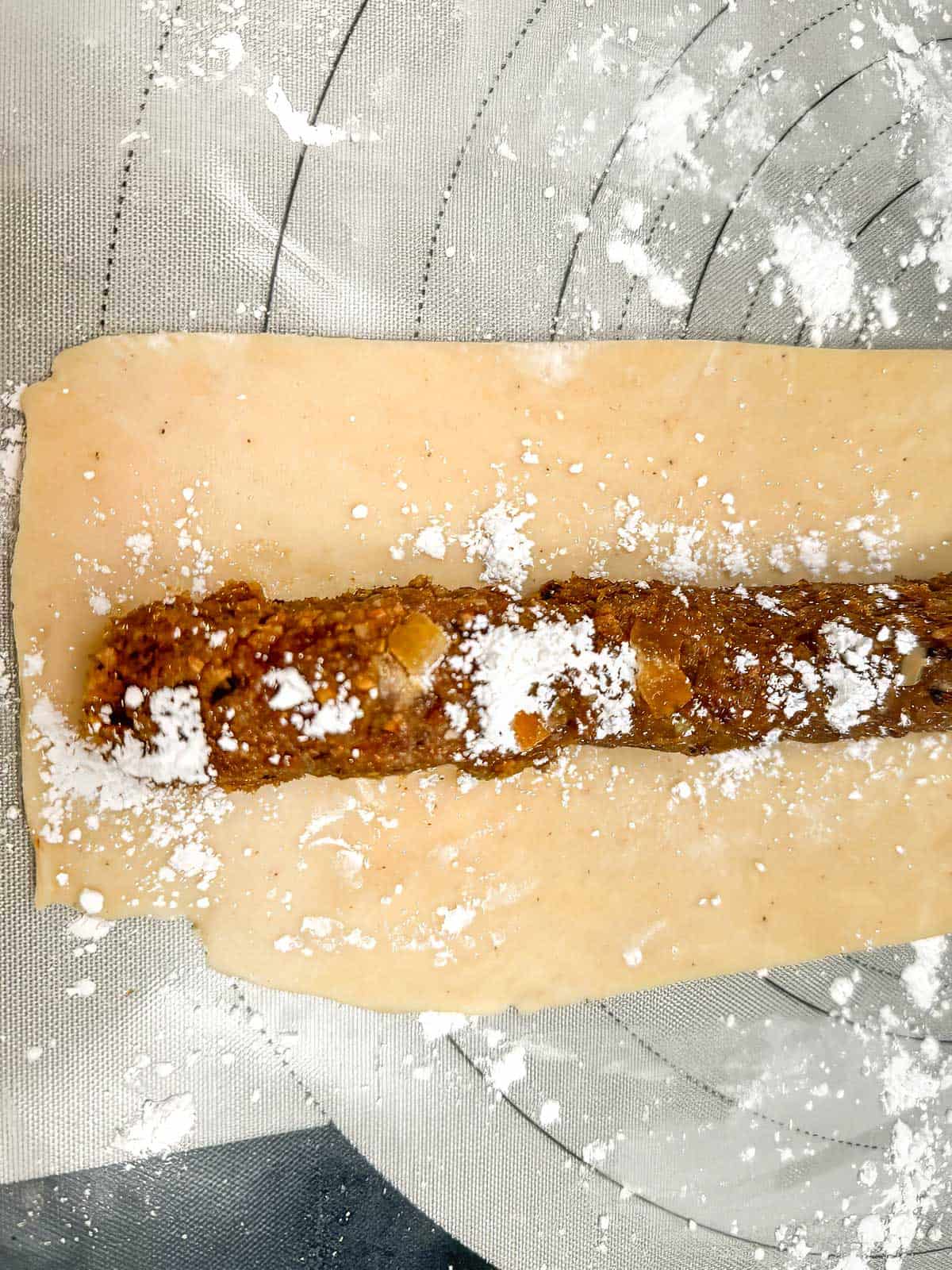
I take the orange peel pieces and stick them randomly down the fig log. Also, I added some powdered sugar on top of the fig log, not much, just a little.
How to Seal the Fig Filled Cookie Log
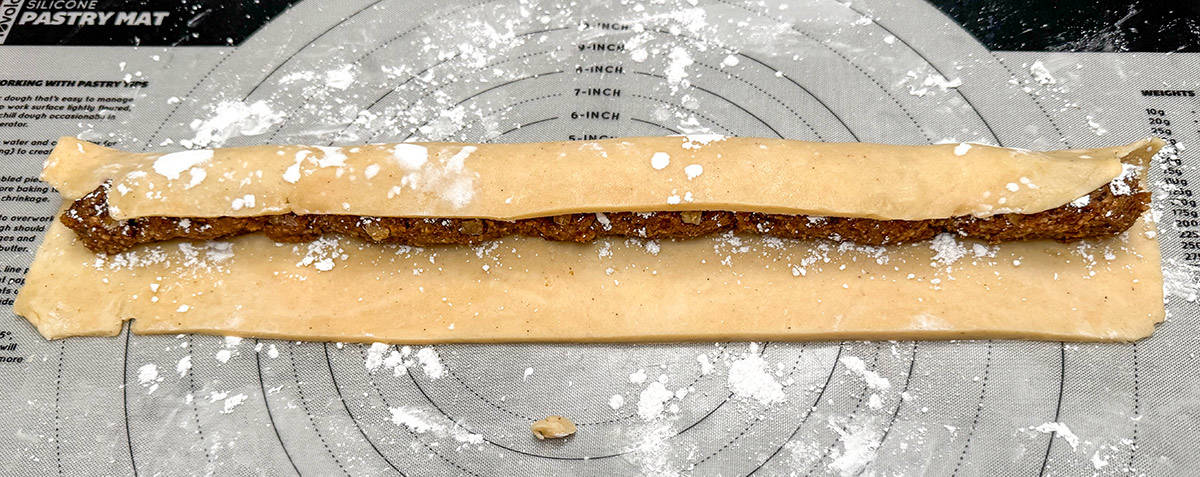
Take the egg white and, with a fork, beat it a little to get it frothy. I also grab a pastry brush. Take one side of the dough and lay it over the fig log.
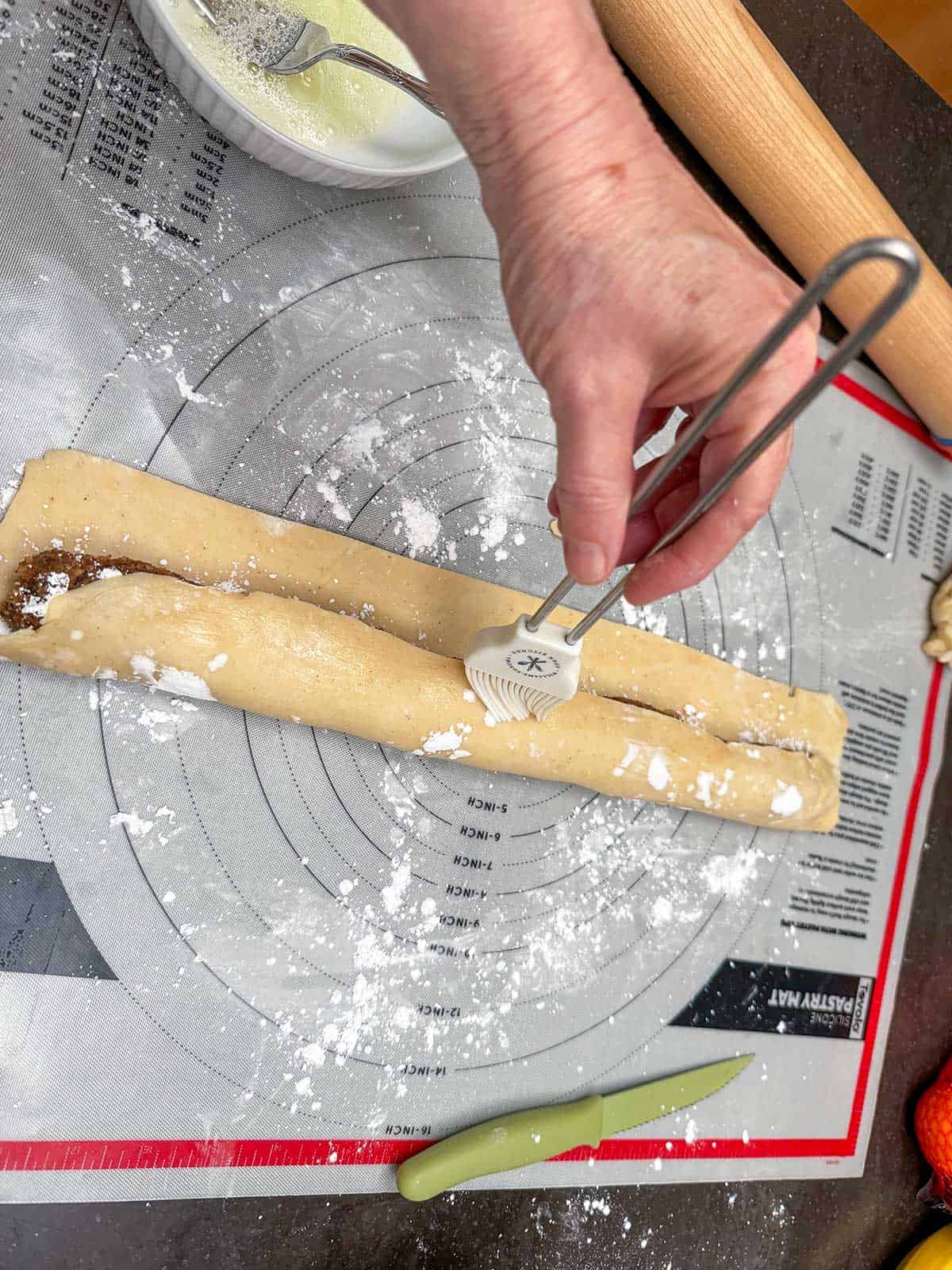
Take the pastry brush and brush the egg white on the top edge of the dough.
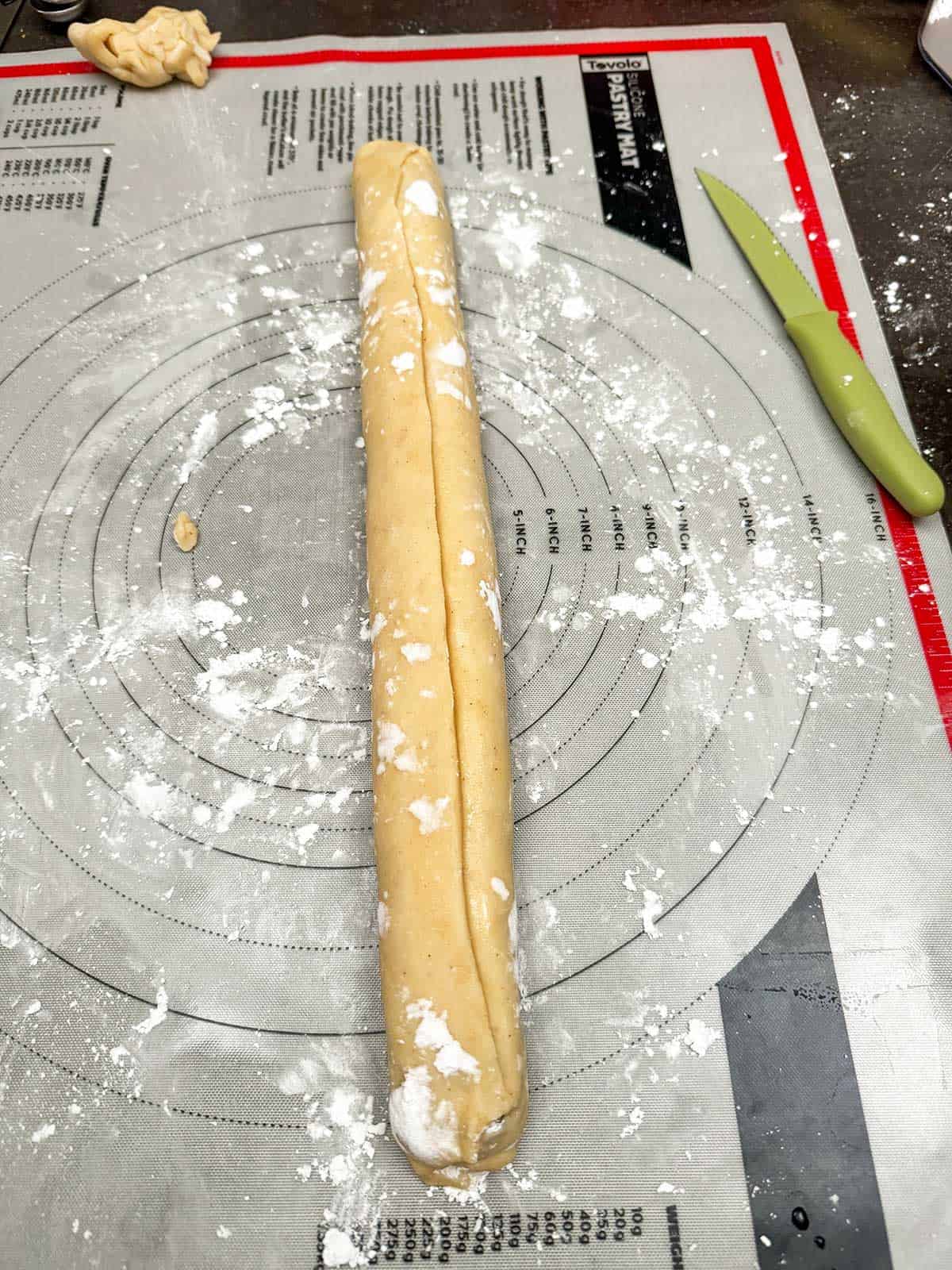
Bring the other side of the dough over the brushed egg white so that the ends over laps. Press gently so that the overlapped dough seal.
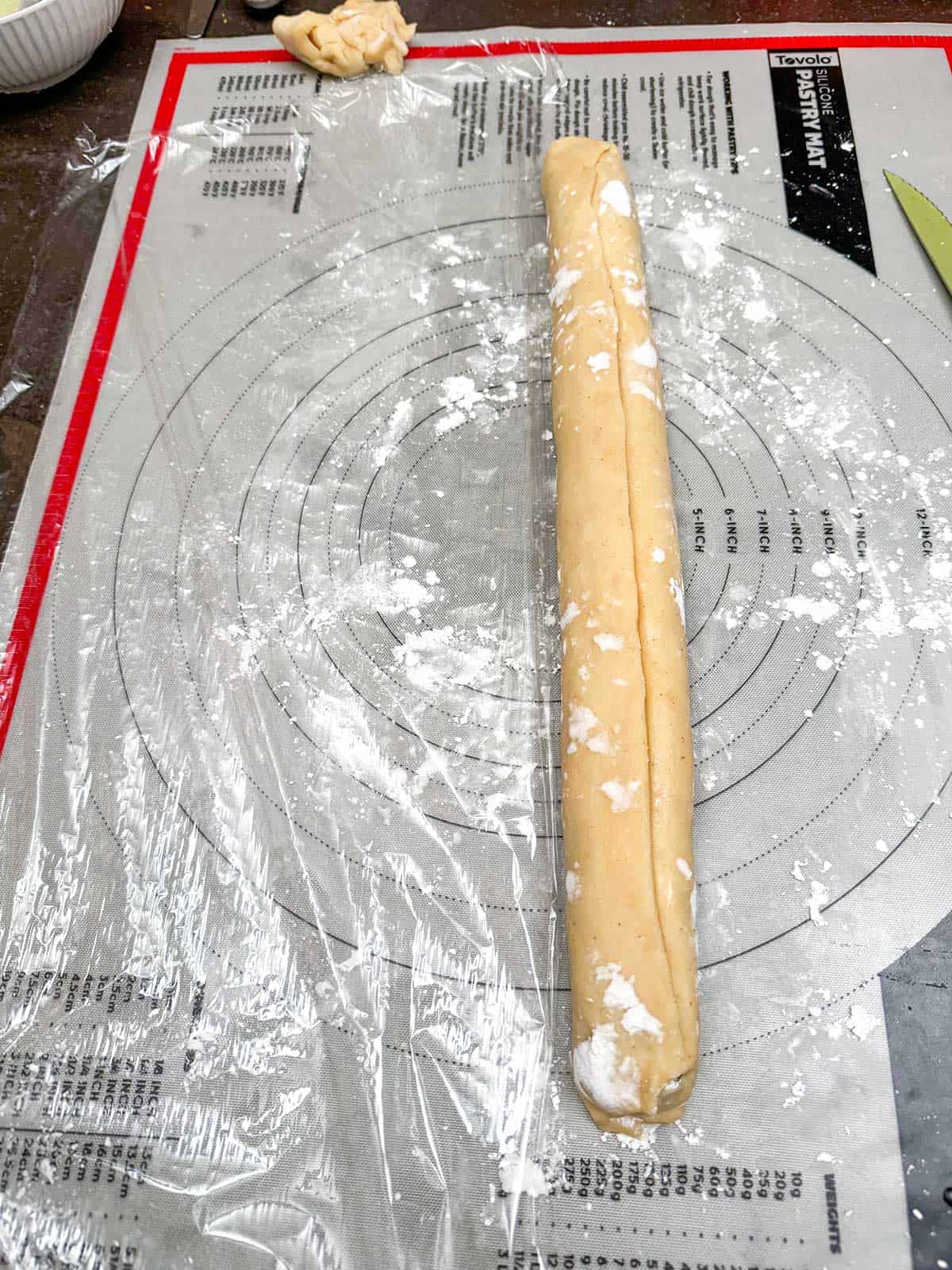
Lay plastic wrap along the side of the completed log (make sure it is longer to seal the ends) and roll the log onto the plastic wrap until it has wrapped the log. Fold the plastic wrap end under the log.
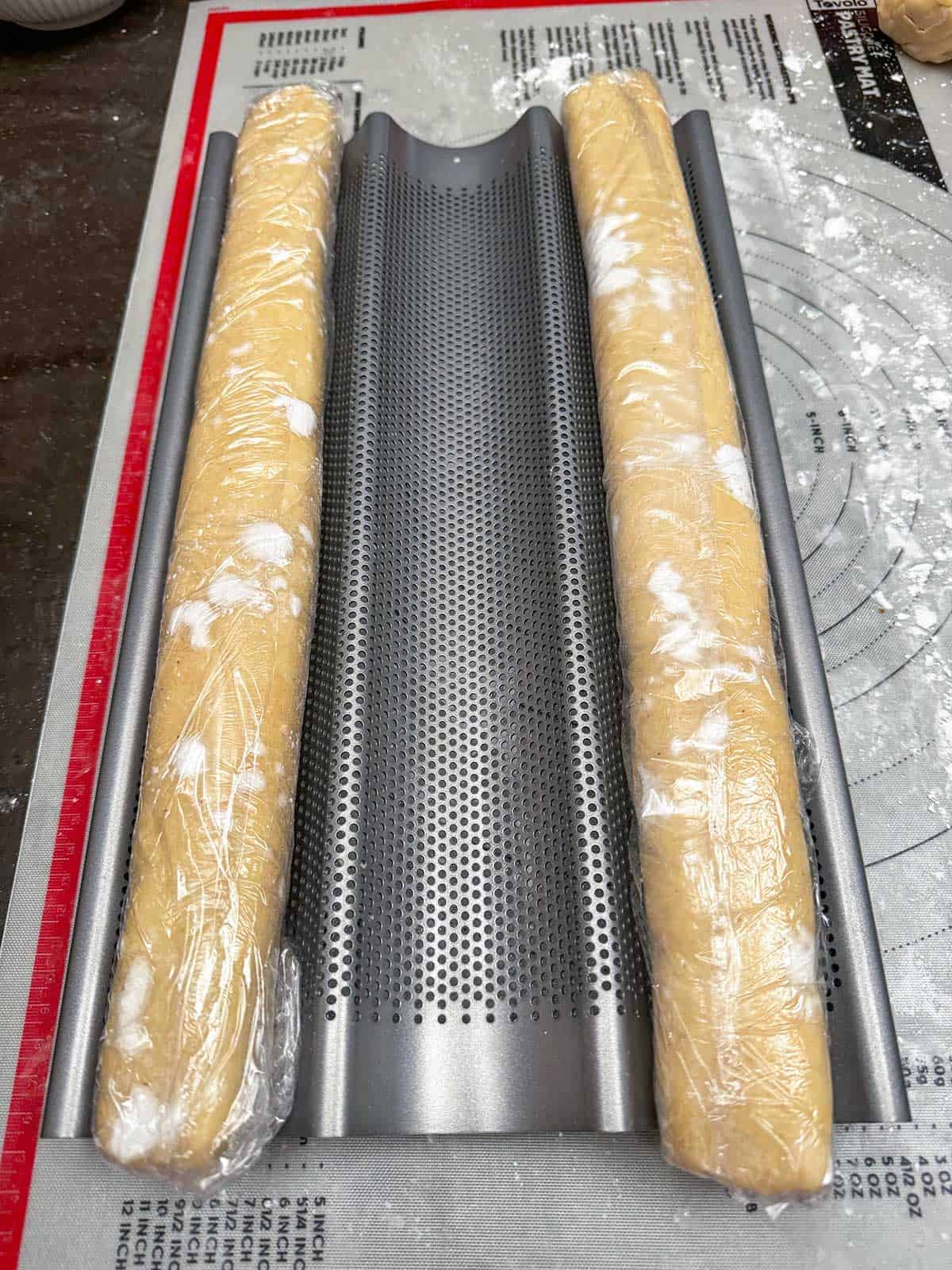
Lay the logs with the seam underneath, this will help with sealing the edges. Refrigerate for an hour. I left mine in over night since I got busy again.
Slicing and Baking
Unwrap one of the logs and lay it on a cutting board. To make my cookies uniform, I lay a flat ruler to score the dough before cutting them. This helps to ensure that the cookies will bake the same.
I made my cookies about an inch wide but you can make them a little bigger if you like. Whatever size you make them be consistent so they bake evenly.
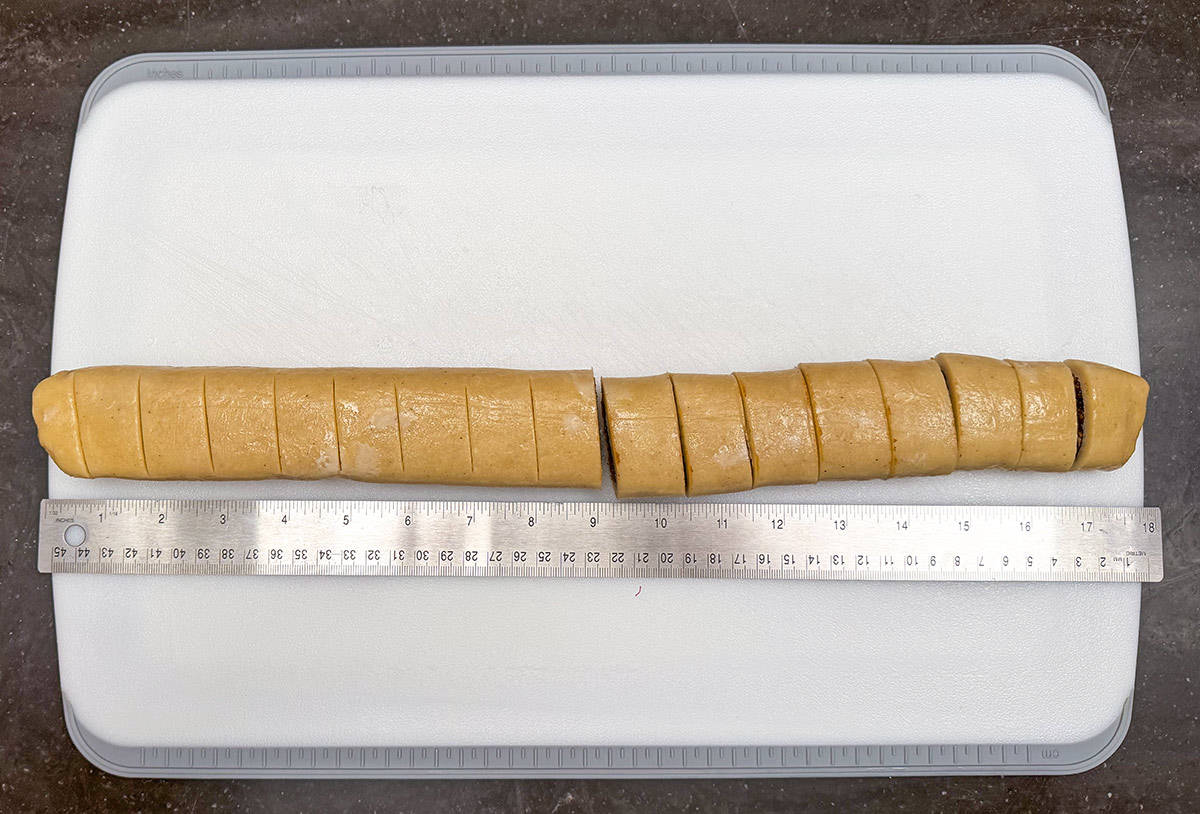
Bring your oven to 350°F (175°C or 180°C), and line 2 cookie sheet pans with parchment paper. Sit the cookies up on the parchment paper with the seam side down. This helps to make sure they do not pop open. Bake for 14-16 minutes.
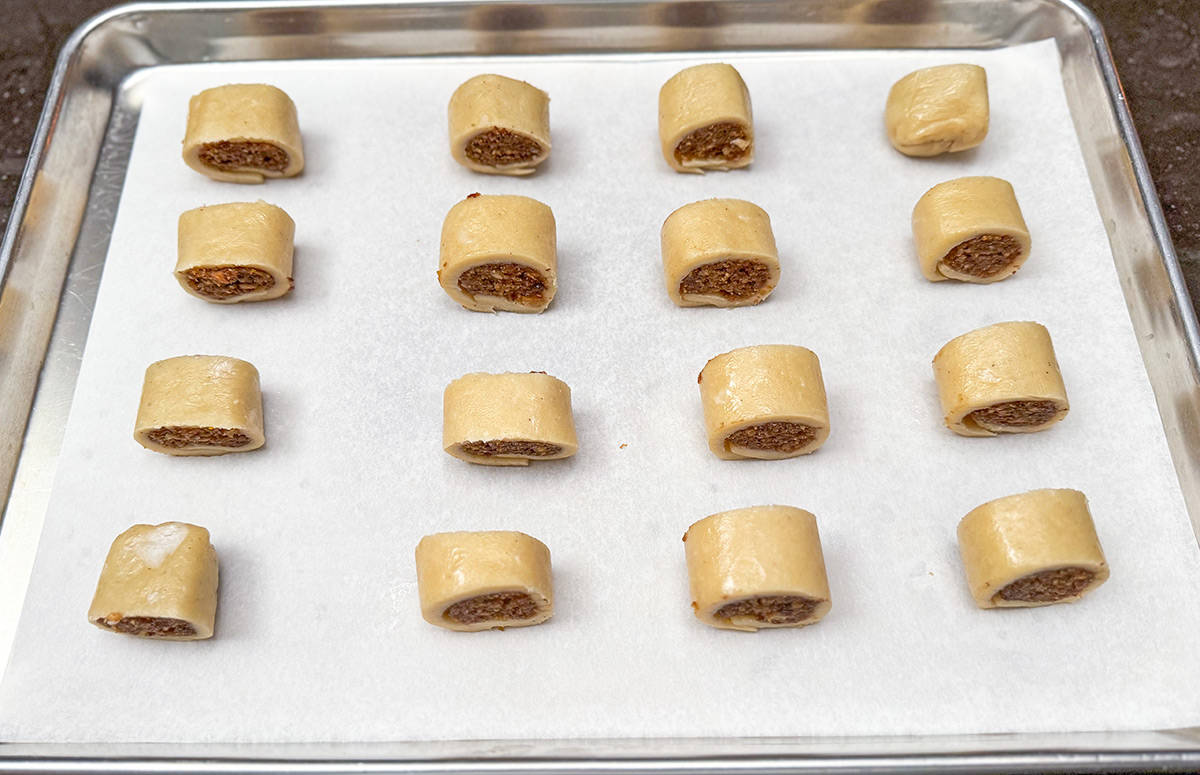
Leave them on the pan for a minute after removing them from the oven, then move them to a cooling rack. Make sure they are completely cooled before starting the vanilla glaze.
Adding the Vanilla Glaze
Weigh the powdered sugar in the bowl you will use to mix the vanilla glaze. Then add the vanilla extract, and I do 3 tablespoons of the milk to start. Take a fork and mix. If it looks too thick, add the 4th tablespoon of milk. You want the glaze to be pourable from a spoon.
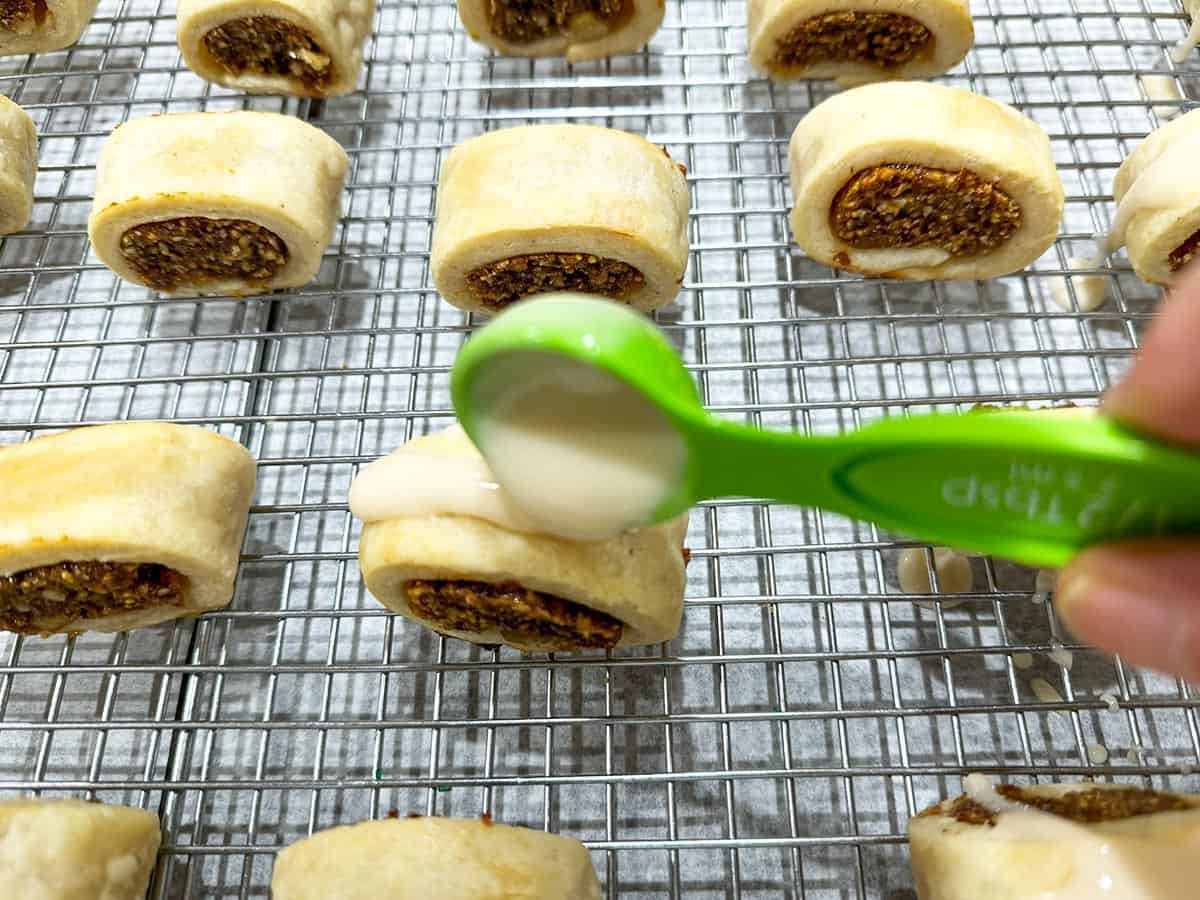
I used a ½ tablespoon of glaze and went right along the top. This way, it can run down the sides. You can add whatever decoration on top if you like. I wanted a little color, so I used Nonpareils sprinkles. I would glaze 5 or 6 cookies at a time, then add the decoration so they stick before moving on to the next set of cookies.
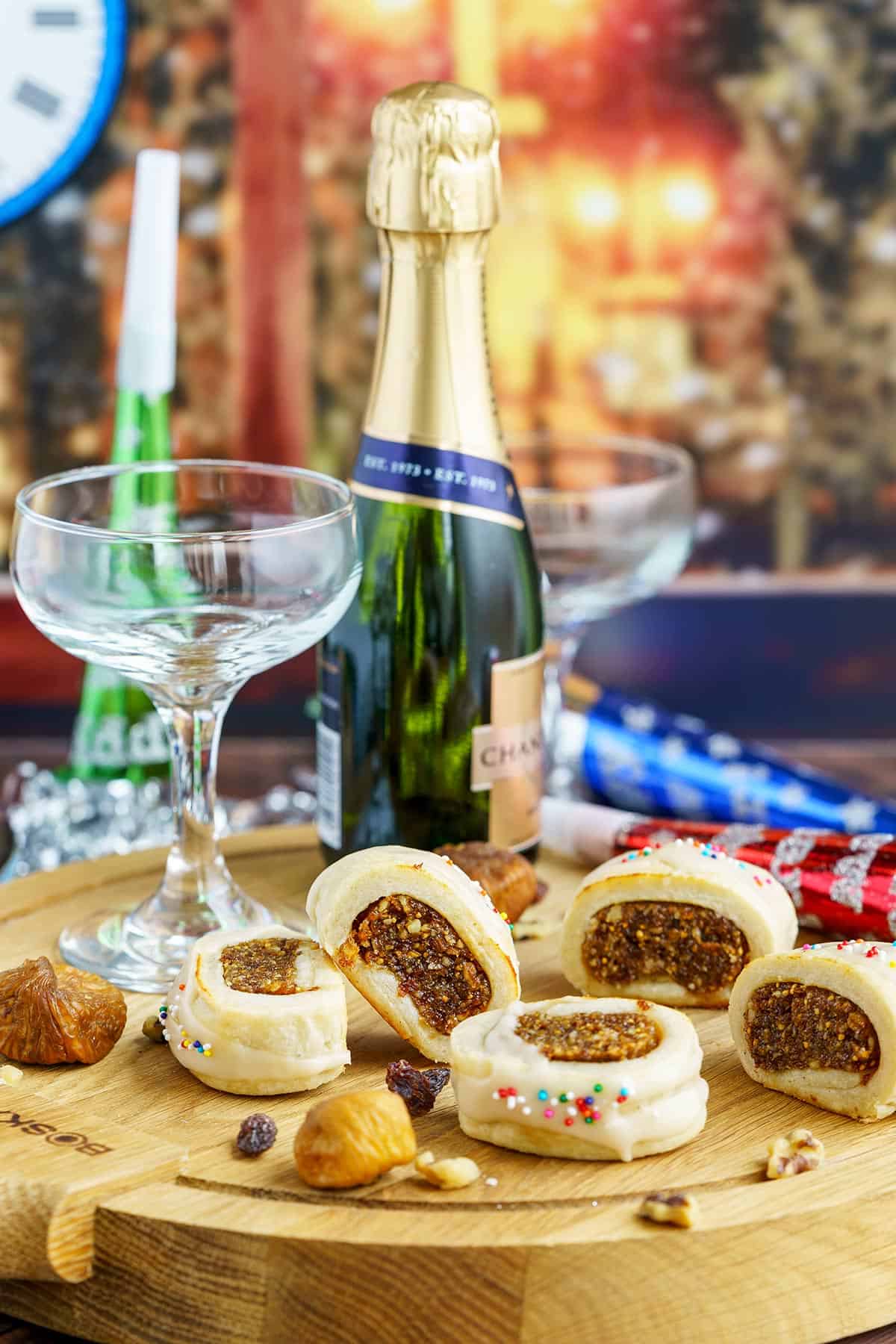
Enjoy!
FAQ's
I used dried figs for this recipe. There are, of course, different types of dried figs. Black Mission is one of the most popular; it is sweet and has a nice texture. You can use almost any dried fig you have on hand, but you want them to be soft when you squeeze them.
I put them in a container with an airtight lid, which will keep them for a week.
You could use another liquid besides milk. I used vanilla extract and milk because I wanted to really taste the figs. But if you like the orange flavor you could carry that over to the glaze. Substitute the milk for orange juice. Or you could add orange extract for the vanilla extract. Be careful, you will not need near as much of the orange extract as you do for the vanilla extract.
Other Fig or Orange Cookies
Recipe
Fig Cookies with Vanilla Glaze
Barbara HallWould you like to save this recipe?
Ingredients
Outside Cookie
- 1 cup (227 g) Butter unsalted
- 6 ounces (6 ounces) Cream Cheese
- 2 ½ cups (312.5 g) All-purpose flour
- ¼ teaspoon (0.25 teaspoon) Ground cinnamon
- ⅛ teaspoon (0.13 teaspoon) Ground cloves
Fig Filling
- 2 cups (298 g) Dried figs
- ½ cup (58.5 g) Chopped walnuts
- ½ cup (72.5 g) Raisins
- ⅛ teaspoon (0.13 teaspoon) Ground cloves
- ¼ teaspoon (0.25 teaspoon) Ground cinnamon
- 2 Tablespoons (2 Tablespoons) Orange juice
- 1 Tablespoon (1 Tablespoon) Orange zest
- 1 Tablespoon (1 Tablespoon) Honey
- ¼ cup (59.15 g) Apricot preserves
- 1 (1) Egg white
- ⅓ cup (32 g) Orange peel
Vanilla Glaze
- 1 ½ cups (180 g) Powdered sugar
- 2 teaspoons (2 teaspoons) Vanilla Extract
- 4 Tablespoons (4 Tablespoons) Milk
- Nonpareils sprinkles (optional)
Instructions
Outside Cookie
- Weigh or measure the flour into a bowl. Add the cinnamon and cloves, running a whisk through to blend.
- In a mixer bowl, add the cream cheese and the butter. Cream the two together on a medium mixer speed for about 2 minutes. Scrap the bowl sides down, turn the mixer to a low speed, and add the flour a third at a time. It will look a little dry, but that is ok. Dump the dough onto a pastry mat or solid surface. Knead the dough so that all the flour is incorporated.
- Divide the dough in half and make two 7-inch long logs. Wrap in plastic wrap and refrigerate for 2 hours. This will allow the butter-cream cheese mixture to absorb the flour. You can leave this in overnight if you get busy and finish the cookies the next day.
Fig Filling
- Take the figs and cut off the stems. Juice and zest the orange.
- Add figs, walnuts, raisins, ground cloves, cinnamon, orange juice, orange zest, honey, and apricot preserves into a food processor bowl. Turn it on for 3 seconds at a time for 3 or 4 times. The mixture should be solid enough to form small logs with your hands. It will be tacky. You may need to pulse more times depending on your food processor.
Assemble the Fig Cookies
- Take the two cookie dough logs out of the refrigerator. They need to sit out for a little to warm up. This will make it easier to roll out. On a pastry mat or counter, sprinkle powdered sugar. I use powdered sugar instead of flour. If you start to roll the cookie dough out and it is cracking on the sides, the dough is still too cold; give it a few more minutes to warm up.
- When rolling out the dough, you want it to be about ⅛" to 3/16" thick. You want a rectangle shape that is 7" by 16" after you trim the sides. Before I trim the sides, I lift the top part, sprinkle with more powdered sugar under the dough, and then do the same for the other half.
- Take the fig filling, which is tacky, and form log shapes about 1 ½" wide. You want the logs to run down the middle of the rectangle. You can fill in any needed spots and smooth it out with your hands. Take the orange peel and stick some the whole way down the log. I did not add them to the food processor because I did not want them into smaller pieces. Sprinkle a little powdered sugar on the log.
- Mix the egg white with a fork to get it frothy. Fold one side of the cookie dough over the fig log and brush the top of the cookie dough with the egg wash. Take the other side of the cookie dough and overlap the egg-washed side. The egg wash helps to seal the cookie dough around the fig filling. Wrap it in plastic wrap, and I lay it in a baguette pan, seam side down, to keep the completed cookie with the fig filling round. Repeat with the other cookie dough log. When both are completed, refrigerate for at least an hour or the next day.
Cut and Bake
- Heat your oven to 350°F (175°C or 180°C), and line 2 cookie sheet pans with parchment paper.
- Take a fig-filled cookie log from the refrigerator and unwrap it from the plastic wrap. I score the log into 1" to 1 ¼", then cut your cookies. I stand them up so the seam where the sides are folded over is on the bottom. Bake for 14-16 minutes. Leave them on the pan for a minute after pulling them from the oven before moving them to a cooling rack.
Vanilla Glaze
- After the cookies have cooled, add the powdered sugar, vanilla extract, and the milk (I start with 3 tablespoons) into a bowl. Using a fork, mix it all together. Add the 4th tablespoon of milk if it is too thick. I take a ½ tablespoon (add what you need to cover) and add it to the top of each cookie. I like a little color, so I sprinkled a few nonpareils sprinkles on top.
Share this recipe
NUTRITION DISCLAIMER
I am not a certified Dietitian or Nutritionist. The nutrition amounts given below are provided through a program and are only a guideline.

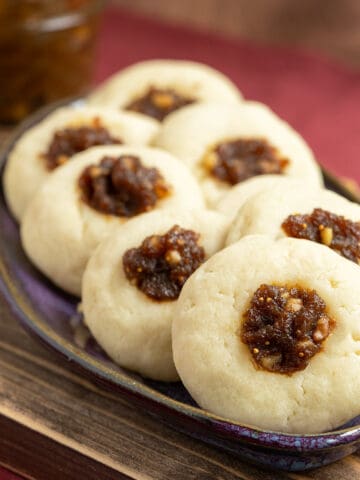
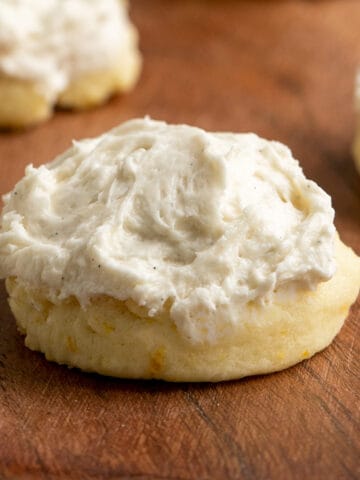
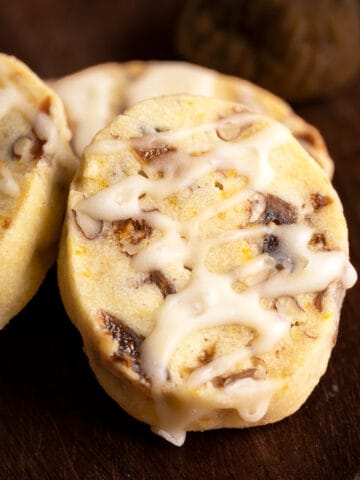
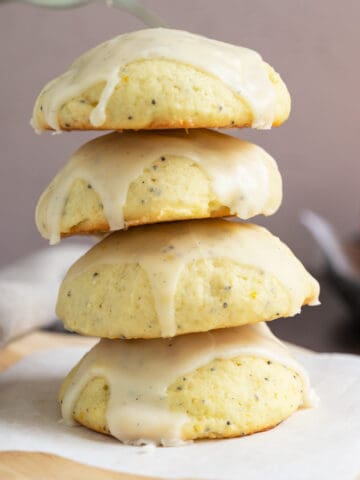
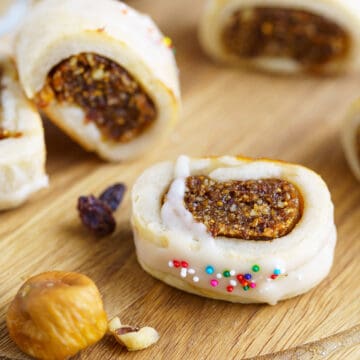
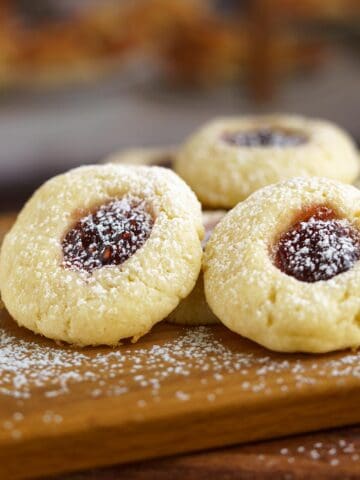
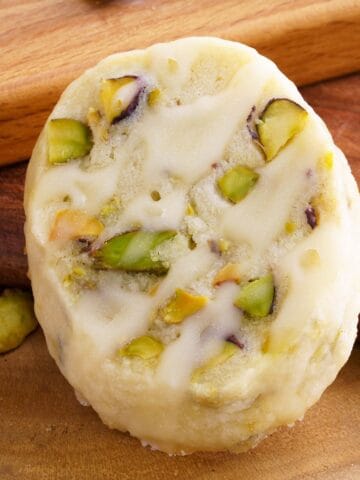
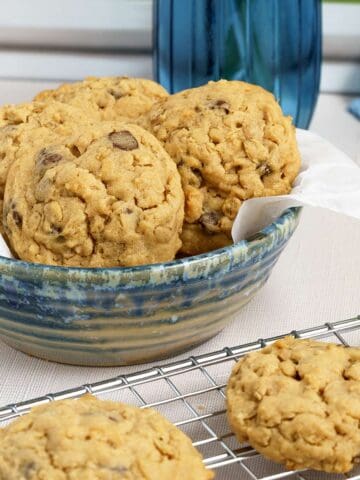
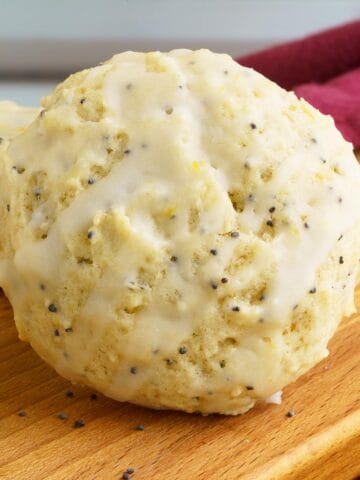
Join the Discussion